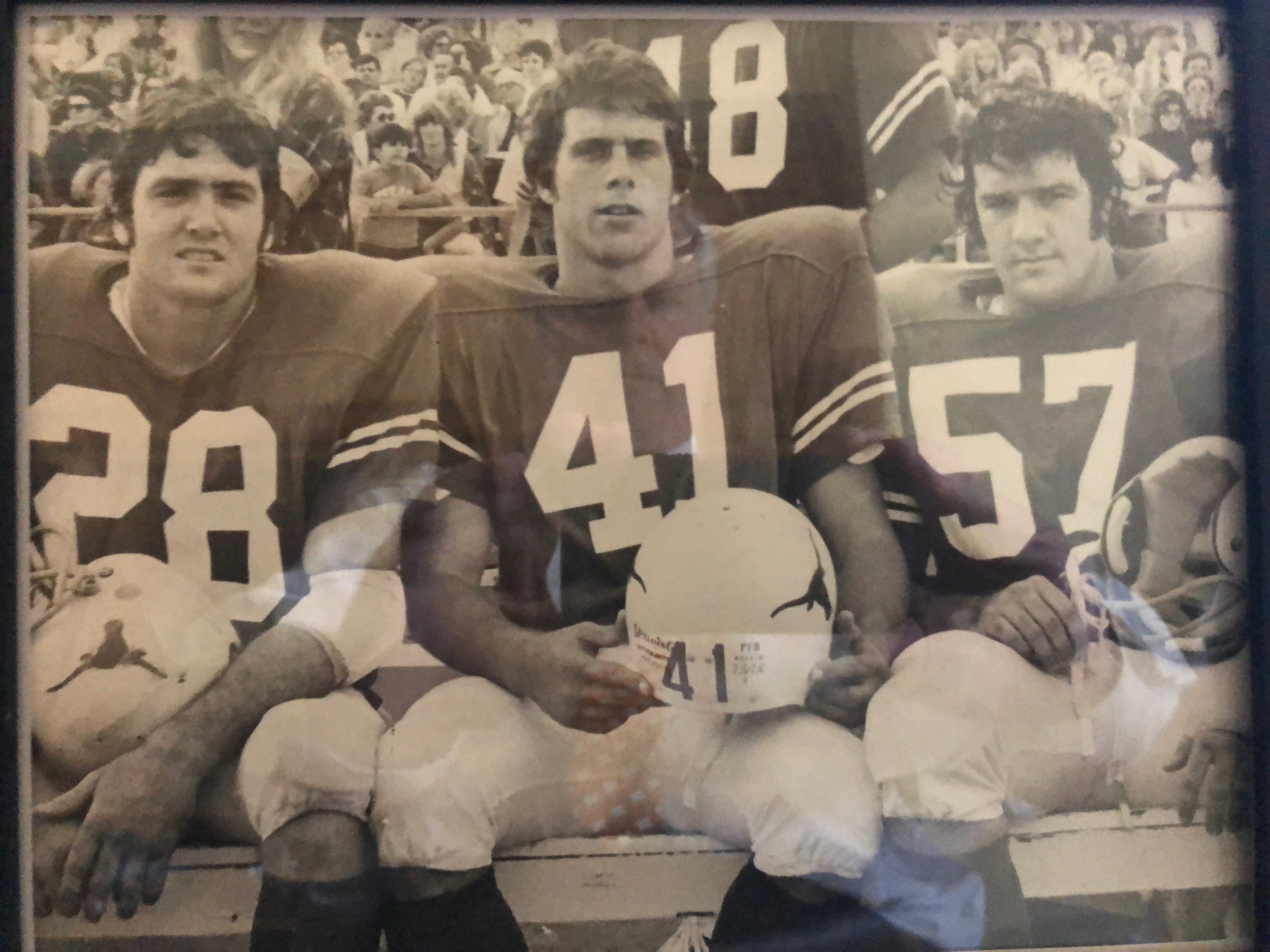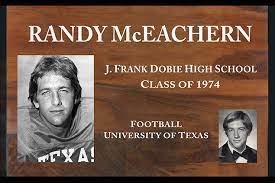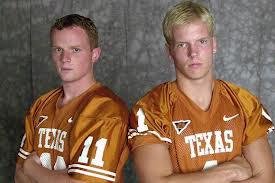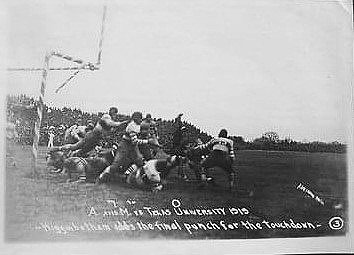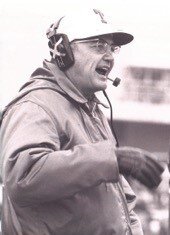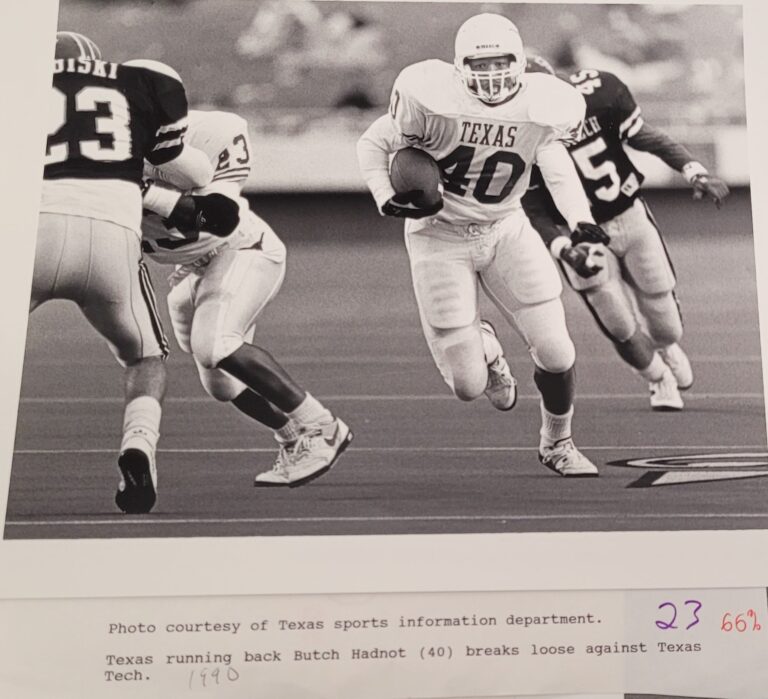Jay Arnold and the 1972-1973 OU games
THE SCANDAL OF ’73: OU BECOMES SWITZER-LAND
by Larry Carlson, with Jay Arnold
2022- Professor Carlson, Donnie Wigginton, and Jay Arnold
It started at the Texas-OU game in 1972.
In spite of five turnovers to that point, Texas trailed the Sooners just 3-0 with three minutes left in the third quarter.
But when the Horns made substitutions to try a third down quick-kick by QB Alan Lowry (with a brisk wind at their backs, OU players yelled “quick kick, quick kick” at each other.
Writer Robert Heard later wrote a book, “When Football Becomes War: Oklahoma vs. Texas,” and claimed that OU had a spy at UT’s ’73 practices, one wearing a hard hat during Memorial Stadium construction work.
Texas RB Don Burrisk later told Heard that OU’s alerts left the Longhorns confused coming out of the huddle.
“We were supposed to run up to the line and get the play off fast before they could get set up. But half of us ran up there and half of us walked.”
In hindsight, the Horns should have called a timeout.
They didn’t. The Sooners blocked the punt and recovered it for a lightning bolt TD, the game’s first, and a 10-0 lead.
A deflated Texas squad continued to flounder offensively and the game ended with a
misleading 27-0 score. It was UT’s lone defeat that season and OU later had to forfeit the game for unrelated infractions. But the damage had been inflicted.
Darrell Royal’s Texas teams had won 12 of 13 State Fair matchups from 1958-1970.
But DKR would never taste victory again in brawls with his alma mater.
The ’73 game was to become the biggest blowout in series history, a 52-13 OU win.
It is tainted by plenty of evidence that the Sooner program, in its first year under new head coach Barry Switzer, was more enthusiastic than ever about “getting an edge” over Texas, whatever it took. The first smoking gun was fired when OU — in mid-August — hired UT assistant coach (and former Longhorn player) away from Texas. Helms would receive a game ball after the beatdown eight weeks later.
Texas suffered five straight losses in the series and then the ’76 tie seemed to break Royal’s will. He would step down less than two months later, exhausted by firing ongoing allegations that were later proven but did not result in real reforms. Yes, the Sooners were regularly punished by the NCAA and occasionally banned from TV appearances or bowl games but the bitter rivalry seemed to erode DKR’s enthusiasm for recruiting and the “new” face of college football.
Royal’s allegations of spying in ’76 were later even confirmed by Switzer himself, in his autobiography, “Bootlegger’s Boy.”
Texas would turn things around under Fred Akers, a former teammate of Switzer’s at Arkansas.
Akers’ Horns would win four of the next five contests, ’77-’81.
But let’s resume the rivalry in ’73 and soak in the narrative from one combatant.
Jay Arnold shares his story
Jay Arnold
Jay Arnold was a senior, an excellent defensive end-turned into a DB who would merit All-SWC honors.
The retired attorney still simmers about OU’s “tactics” that played a big role in the ’73 game.
JAY ARNOLD: “I don’t think the ‘rest of the story’ on that game has ever been fully chronicled. In two-a-days and in the week before the game, we worked on running our “80” defense against the wishbone offense and prepared for OU. Coach (Mike) Campbell came up with a read he had picked up on watching films from OUs games the previous year and in their games prior to that 1973 matchup. Simply put, when OU’s center fired out, it was a run “100% of the time.” to quote Coach Campbell. When the center pulled back to pass block, it was a pass “100 % of the time”. So all week during practice the secondary was instructed to key (watch) the center first and foremost. If the center fired out it was a run, and if the backfield flow was your way, the corners were instructed to come up fast and hard and take the pitchman and disregard a pass because “when the center fired out it was a run 100% of the time”. There was a man designated to their fullback, their QB, and the pitchman in their triple option wishbone. It was the first time in my years at UT that we were taught a scheme based upon keying the center. So during the first part of the game, we did well against their offense, and as I recall, the game was close. Then they had 3 long play-action passes; one of which was a halfback TD pass from Joe Washington, Jr. to Billy Brooks, one of their speedster receivers. On each of those plays, those of us keying the center saw him ‘fire out’ straight ahead, then the corners would come running up, and it would be a play action pass.”
1973 Gary Yeoman, Jay Arnold, Bob Tresch
(Editor’s note: OU would complete six passes that day, for an average of 38 yards per play, as Longhorn DBs followed their coaches’ instructions. It was 21-0 at halftime.)
ARNOLD: “Coach Campbell scrapped the read after the half on the sideline and told us NOT to read the center anymore. Coach Campbell and I had a brief discussion at halftime, and I told him that the center fired out on all 3 of their long TD passes before the half.
As I recall, on Sunday following the game, coach Royal didn’t want to review the game films, but instead wanted to concentrate on “getting ready for the next game”. I had wanted to review the films to see what happened on our read plays on those TDs, so I cut class on Tuesday and went to the coaches’ offices and asked Coach (Tim) Doerr if I could review the OU game film. He said Coach Royal wanted to move on, that the secondary had made the right reads and that OU knew what we were doing defensively, and that I needed to worry about the next game. I left his office and went to Coach Campbell’s office and made the same request. He showed me the films where the OU center would fire out and just lay on the ground and the offside guard would pull around and pass block for him. They knew we were keying the center and designed a false read to camouflage their 3 long passes for TDs. They knew how we were coached that week (and in 2 a days). I asked Coach Campbell how they knew that and he said “I’m not sure.” I think he had suspicions but he didn’t tell me what they were.
So did OU have a better team? Yes, they did. I believe OU was put on probation in August of ‘73 but not sure of the infractions. They were undefeated that year but had tied USC 7-7 a game or two before our game and I believe they were banned from bowl games that year and possibly the next. I wish the Austin American Statesman would have turned loose their young reporter Kirk Bohls on a deep dive assignment into their cheating (getting caught filming our closed practices, hiring our assistant Jim Helms before the season started etc). and letting Kirk come up with “the rest of the story”. Instead, it was passed off as ‘Russian disinformation’ or sore losers, and Coach Royal’s complaints about cheating were never fully investigated, in my opinion.”





